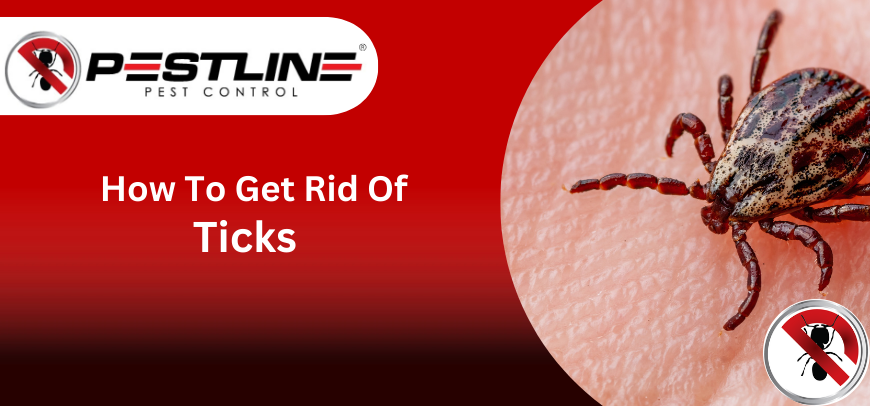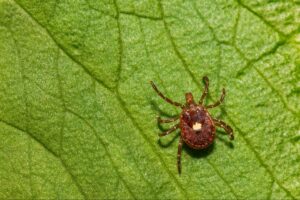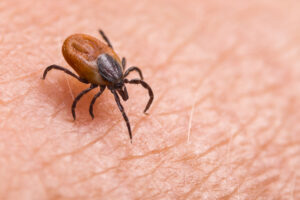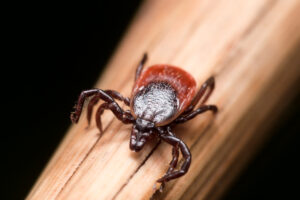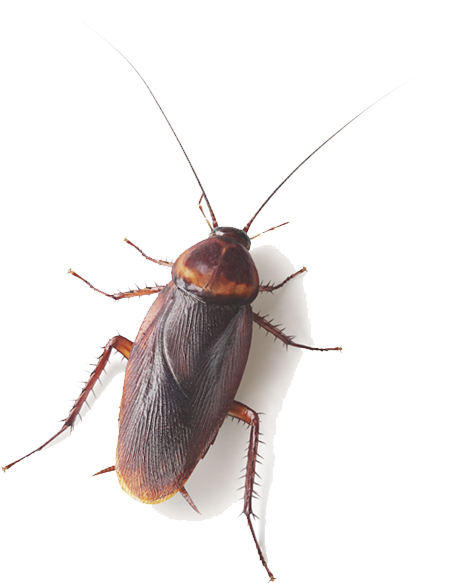How To Get Rid Of Ticks
Worrying about snakes may be your main wildlife focus on a walk through a meadow, down by a river, or on a trail in the bush. But even before leaving your house, ticks can fester in your garden, turning an afternoon in nature into a source of sore and unsightly blood blisters.
Ticks are parasites that feed on animal and human blood by biting through their skin. They’re normally found in outdoor, humid places such as a garden, and in some cases, they can transfer illness and disease, such as tick typhus, spotted fever and Lyme disease.
For pets, there can be more serious and even deadly consequences to a tick bite.
In this guide, we’re going to tell you how to get rid of ticks and prevent them from digging into you and your household, before it’s time for a thorough elimination by professionals.
Here are our top 6 tips on how to get rid of ticks:
- Regularly Mow Your Lawn & De-Weed
- Use Insect Repellent
- Wear Long, Tight Clothing
- Treat Furry Tick Hosts
- Keep Your Home Tick Free
- Call In The Experts
1. Regularly Mow Your Lawn & De-Weed
Minimise tick access to long grass by keeping your garden well-trimmed. Get into the habit of de-weeding your garden regularly too.
If your property backs onto a bush, or a larger expanse of greenery, remove weeds near the edge of your boundary to further repel ticks from feeling invited to enter your garden.
2. Use Insect Repellent
One of the most effective ways to get rid of ticks from your body is by liberally spraying or coating yourself with insect repellent.
Most insect repellents contain catch-all chemicals such as DEET that work to keep other insects and flying pests away. This has the added benefit of also helping you get rid of mosquitos, biting midges and fleas, at least from your skin.
3. Wear Long, Tight Clothing
Ticks like cracks and crevices just like many other common household pests such as termites and ants. Get rid of old mattresses lying about, store spare linen and sleeping bags in a dry place and wash them before use.
The same goes for all upholstery and furniture; if you’re pulling something out of a garage, or bringing second-hand furniture into your home, ensure it is thoroughly inspected for ticks and sprayed with pesticide.
4. Treat Furry Tick Hosts
Your furry friend may be a beloved part of the family, but they’re nothing more than hosts to ticks, who’ll savour the opportunity to live off them as a source of food.
Your vet can recommend pet-friendly preventative measures and treatments such as sprays, collars and shampoos. Keep fur shaved as much as reasonably possible, and check your pets daily, removing ticks if they’re discovered.
If a pet is infected, keep it separate from any other animals until successfully treated, and monitor their behaviour for symptoms of disease.
5. Keep Your Home Tick-Free
Wasps will sneak into your home in even the tiniest of gaps. Whether it’s a space between your wall sidings, a decay in the double glazing, or small holes at the corners of your windows, a wasp will find its way in.
Patch up the holes and fill in the cracks with expandable sealant, or call a decorator for a thorough service if it’s more than just the odd hole around your home.
Do this during the autumn and winter months before the worker wasps become active again.
6. Call In The Experts
It’s vital to get rid of ticks as soon as you spot them or discover evidence of their proximity in the form of bite marks, rashes or swollen skin.
Whilst the odd bite may not seem like too much of an issue, the risk of being infected with a much more serious disease is not to be ignored.
For pet owners, the risk is substantially greater, with their ability to cause serious harm to dogs and cats, such as tick paralysis.
Call the experts from Pestline to arrange a full sweep of your house and garden to eradicate these pests and their risks.
Ticks: The Final Word
Ticks are at best a sore bite and at worse the transmitters of a dangerous disease. It’s best to ensure your garden, furniture, pets and family members are tick-free, to reduce the risk of being infected by a parasite carrying one of these nasty diseases.
The Pestline experts know how to efficiently take care of ticks alongside all other common household pests. Keep you and your family protected from ticks with professional pest removal, and make sure the only ‘tick’ in your garden is the guarantee of a relaxing, outdoor space.
The friendly team at Pestline are here to help. Call us on 1300 361 646 to let us know more about your tick problem, and get a free quote.
If you’re trying to get rid of other pests in your home and garden, check out these other blogs too:
- How To Get Rid Of Rats & Mice
- How To Get Rid Of Wasps
- How To Get Rid Of Ants
- How To Get Rid Of Spiders
- How To Get Rid Of Possums
- How To Get Rid Of Fleas

